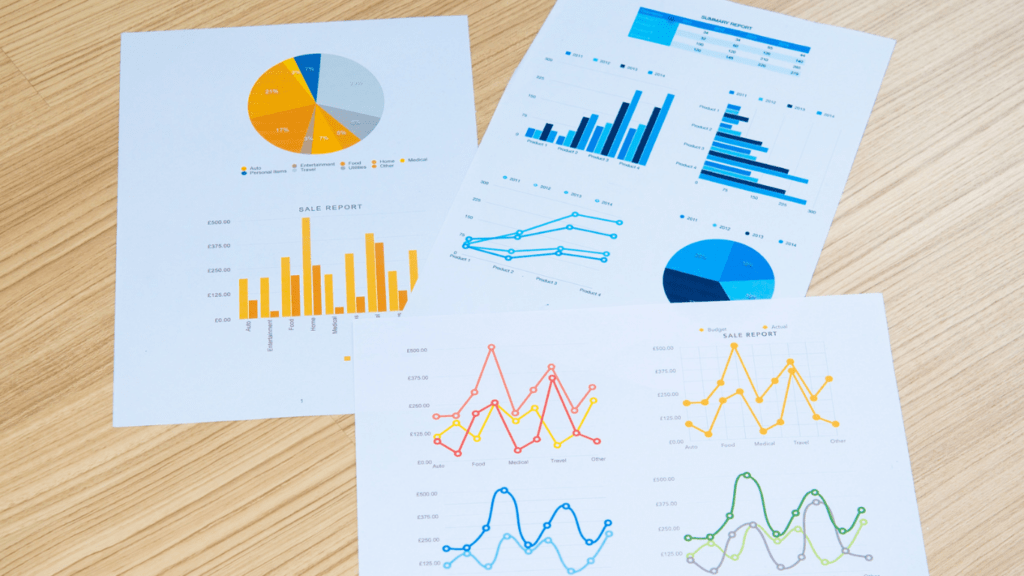Understanding Inflation
Inflation refers to the general increase in prices of goods and services over time, reducing the purchasing power of money. The Consumer Price Index (CPI) and Producer Price Index (PPI) often measure inflation. Central banks, like the Federal Reserve, monitor these indexes to gauge inflation levels.
Inflation impacts various aspects of the economy. As prices rise, the cost of raw materials, labor, and other operational expenses for small businesses increases. This erodes profit margins unless businesses can pass these costs to customers through higher prices. However, small businesses may face customer resistance when hiking prices, risking reduced sales volume.
Inflation affects not just day-to-day operations but also long-term financial planning. Businesses must account for potential increases in costs when planning budgets and projecting future revenues. They may need to renegotiate supplier contracts or explore more cost-effective alternatives, ensuring they remain competitive.
Understanding inflation helps small business owners anticipate economic shifts. By monitoring inflation trends, owners can make informed decisions about pricing, inventory, and investments. This proactive approach helps mitigate the adverse effects of inflation, ensuring sustained business growth and stability.
Key Components of Inflation
Understanding the key components of inflation helps small business owners navigate economic challenges. Two essential indices used to measure inflation are the Consumer Price Index (CPI) and the Producer Price Index (PPI).
Consumer Price Index (CPI)
The Consumer Price Index (CPI) measures the average change in prices paid by consumers for goods and services over time. The Bureau of Labor Statistics (BLS) calculates CPI by analyzing a broad basket of goods and services. When CPI rises, it indicates that consumers face higher costs, affecting their purchasing behavior. For example, increased grocery prices can lead to reduced spending on non-essential items. Small businesses can use CPI data to adjust pricing strategies and manage cash flow better. Staying informed about CPI trends allows businesses to anticipate changes in consumer spending and adapt accordingly.
Producer Price Index (PPI)
The Producer Price Index (PPI) tracks the average change in selling prices received by domestic producers for their output. The BLS also oversees PPI calculations, which cover various sectors like manufacturing, agriculture, and mining. An upward trend in PPI signals rising production costs, including raw materials and manufacturing expenses. Small businesses, especially those dependent on suppliers, should monitor PPI to understand cost pressures within their supply chains. By analyzing PPI data, businesses can negotiate better terms with suppliers or explore alternative sourcing options to control costs. Effectively managing these aspects helps maintain profitability amid inflationary pressures.
How Inflation Affects Small Businesses
Inflation can create significant hurdles for small businesses. Understanding its impact is vital for improving strategic planning and ensuring long-term success.
Increased Costs
Rising prices mean higher expenses for small businesses. Costs for raw materials, utilities, and wages all increase during inflationary periods. For instance, if the price of key supplies rises 10%, expenses climb proportionally, eating into profit margins. Businesses must either absorb these costs or increase prices, potentially risking customer dissatisfaction.
Reduced Purchasing Power
Inflation reduces the purchasing power of both businesses and consumers. If inflation rises to 5%, the value of money erodes by the same rate. Customers can buy less with the same amount of money, often leading to decreased spending on non-essential items. Small businesses, particularly those selling discretionary goods, may observe a sharp decline in sales. Lower consumer spending forces businesses to reevaluate their revenue strategies to sustain operations.
Cash Flow Challenges
- During inflation, maintaining smooth cash flow becomes tricky.
- Businesses dealing with delayed payments or slow receivables face heightened cash flow issues as costs escalate.
- If operating expenses rise 8% but receivables remain stagnant, the gap strains cash reserves.
- Small businesses may need to renegotiate payment terms with suppliers or secure short-term financing to bridge the cash flow gap, ensuring liquidity and operational continuity.
Strategies for Managing Inflation

Managing inflation requires strategic actions to maintain profitability and sustainability in a changing economic landscape.
Cost-Cutting Measures
Implementing cost-cutting measures helps small businesses manage operational expenses effectively. Analyzing expenses to identify non-essential costs is crucial. For example, consider reducing office supplies or utility consumption. Negotiating with suppliers can lead to better pricing and bulk purchase discounts. Exploring automation for routine tasks also reduces labor costs, enhancing efficiency.
Price Adjustments
Adjusting prices thoughtfully can offset rising costs without alienating customers. Evaluate the competitive landscape to determine the optimal timing and extent of price changes. Transparent communication about the reasons for price hikes maintains customer trust. For instance, highlighting increased raw material costs can justify higher prices. Offering value-added services or bundles can also cushion the impact of price increases.
Diversification
Diversifying revenue streams can mitigate the risks associated with inflation. Expanding product lines or services enhances market resilience. For example, adding complementary products attracts more customers, spreading risk across multiple revenue sources. Entering new markets, whether local or international, broadens the customer base. Investing in digital channels, such as e-commerce or online services, can also provide new revenue opportunities. Diversification ensures stability and growth despite economic fluctuations.
Real-Life Examples
Analyzing real-life cases is essential to understand the impact of inflation on small businesses. Here, I provide two illustrative case studies.
Case Study: A Local Restaurant
A local restaurant faced significant challenges due to inflation. Rising costs for ingredients meant their usual Italian dishes now cost more to prepare. For example, the price of tomatoes increased by 20%, and the cost of imported cheese went up by 15%. To manage this, the restaurant:
- Adjusted Menu Prices: They increased prices for popular dishes like Spaghetti Carbonara by 10%.
- Modified Recipes: They substituted expensive ingredients with locally sourced alternatives, reducing dependency on imports.
- Renegotiated Supplier Contracts: They negotiated bulk discounts with local suppliers, mitigating cost increases.
These adjustments helped maintain profit margins without losing customers. However, it required careful communication to avoid customer dissatisfaction with price hikes.
Case Study: A Retail Store
A small retail store specializing in clothing experienced inflation-related issues, notably in supply chain costs. Shipping expenses rose by 25%, and inventory costs increased by 15%. This forced the store to rethink its strategies:
- Streamlined Inventory: They focused on high-margin products, reducing inventory for low-margin items like basic tees and socks.
- Adopted Digital Channels: They invested in an online sales platform, reaching a broader customer base and reducing dependency on in-store sales.
- Promoted Loyalty Programs: They enhanced customer retention through loyalty rewards, thereby stabilizing sales revenue.
These strategies enabled the retail store to navigate inflation pressures effectively, ensuring sustained business operations.
By examining these real-life cases, it’s clear that proactive measures are vital for small businesses to survive and thrive amidst inflation.
The Role of Government Policies
Government policies significantly influence how small businesses navigate inflation. Policy changes related to interest rates and tax incentives directly impact small business operations and sustainability.
Interest Rates
Interest rates, determined by central banks, affect inflation and borrowing costs. When interest rates rise, borrowing becomes more expensive. Increased loan fees can constrain businesses, limiting their ability to expand or manage operational costs. Conversely, lower interest rates reduce the cost of borrowing, providing growth opportunities by financing expansions, purchasing equipment, or managing cash flow more effectively. Small businesses must stay informed about interest rate trends to make strategic decisions about investments and borrowing.
Tax Incentives
Tax incentives can help offset the adverse impacts of inflation. Deductions and credits enable small businesses to reduce tax liabilities, freeing up capital for reinvestment or operational expenses. For example, the Section 179 deduction allows businesses to deduct the full purchase price of qualifying equipment and software, easing the burden of inflation-induced cost increases. Additionally, tax credits for research and development encourage innovation, helping businesses improve efficiency and competitiveness. By leveraging these incentives, small businesses can better manage rising costs and sustain profitability.



